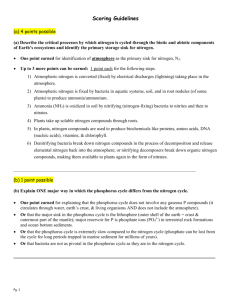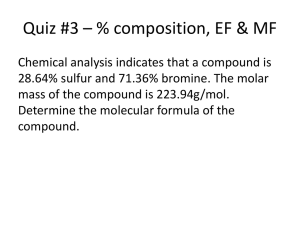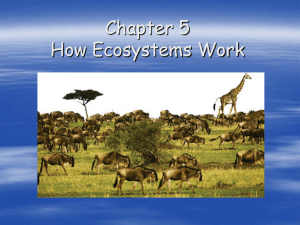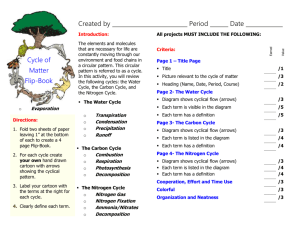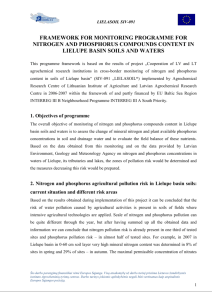File - Pace Ap Environmental Science
advertisement
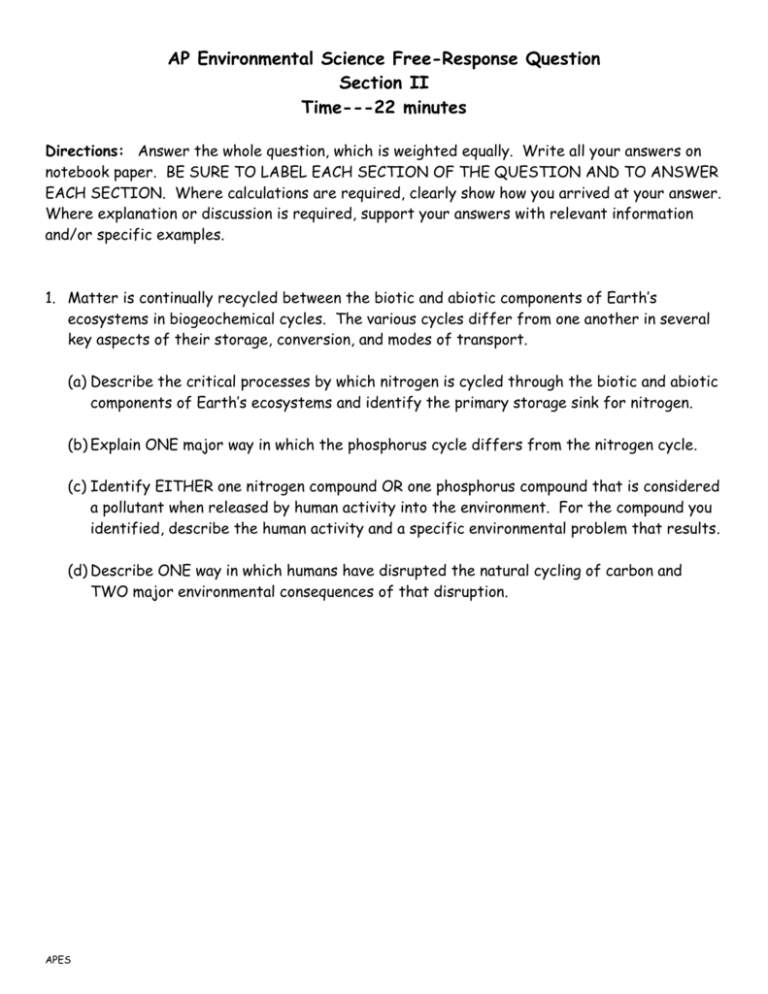
AP Environmental Science Free-Response Question Section II Time---22 minutes Directions: Answer the whole question, which is weighted equally. Write all your answers on notebook paper. BE SURE TO LABEL EACH SECTION OF THE QUESTION AND TO ANSWER EACH SECTION. Where calculations are required, clearly show how you arrived at your answer. Where explanation or discussion is required, support your answers with relevant information and/or specific examples. 1. Matter is continually recycled between the biotic and abiotic components of Earth’s ecosystems in biogeochemical cycles. The various cycles differ from one another in several key aspects of their storage, conversion, and modes of transport. (a) Describe the critical processes by which nitrogen is cycled through the biotic and abiotic components of Earth’s ecosystems and identify the primary storage sink for nitrogen. (b) Explain ONE major way in which the phosphorus cycle differs from the nitrogen cycle. (c) Identify EITHER one nitrogen compound OR one phosphorus compound that is considered a pollutant when released by human activity into the environment. For the compound you identified, describe the human activity and a specific environmental problem that results. (d) Describe ONE way in which humans have disrupted the natural cycling of carbon and TWO major environmental consequences of that disruption. APES Scoring Guidelines (a) 4 points possible (a) Describe the critical processes by which nitrogen is cycled through the biotic and abiotic components of Earth’s ecosystems and identify the primary storage sink for nitrogen. One point earned for identification of atmosphere as the primary sink for nitrogen, N2. Up to 3 more points can be earned: 1 point each for the following steps. 1) Atmospheric nitrogen is converted (fixed) by electrical discharges (lightning) taking place in the atmosphere. 2) Atmospheric nitrogen is fixed by bacteria in aquatic systems, soil, and in root nodules (of some plants) to produce ammonia/ammonium. 3) Ammonia (NH3) is oxidized in soil by nitrifying (nitrogen-fixing) bacteria to nitrites and then to nitrates. 4) Plants take up soluble nitrogen compounds through roots. 5) In plants, nitrogen compounds are used to produce biochemicals like proteins, amino acids, DNA (nucleic acids), vitamins, & chlorophyll. 6) Denitrifying bacteria break down nitrogen compounds in the process of decomposition and release elemental nitrogen back into the atmosphere; or nitrifying decomposers break down organic nitrogen compounds, making them available to plants again in the form of nitrates. ________________________________________________________________________________________ (b) 1 point possible (b) Explain ONE major way in which the phosphorus cycle differs from the nitrogen cycle. One point earned for explaining that the phosphorus cycle does not involve any gaseous P compounds (it circulates through water, earth’s crust, & living organisms AND does not include the atmosphere). Or that the major sink in the phosphorus cycle is the lithosphere (outer shell of the earth = crust & outermost part of the mantle); major reservoir for P is phosphate ions (PO43-) in terrestrial rock formations and ocean bottom sediments. Or that the phosphorus cycle is extremely slow compared to the nitrogen cycle (phosphate can be lost from the cycle for long periods trapped in marine sediment for millions of years). Or that bacteria are not as pivotal in the phosphorus cycle as they are in the nitrogen cycle. _______________________________________________________________________ APES - 1998 Pg. 1 (c) 3 points possible (c) Identify EITHER one nitrogen compound OR one phosphorus compound that is considered a pollutant when released by human activity into the environment. For the compound you identified, describe the human activity and a specific environmental problem that results. One point earned for identification of one N (NO, N2O) or one P (PO43-) compound (such as nitrates in commercial fertilizers, or nitric oxide gas from fossil fuel combustion, or nitrous oxide gas through the action of anaerobic bacteria on livestock wastes, or phosphates in cleaning agents). One point earned for description of a human activity that results in the release of the compound (application of fertilizer in farming and subsequent runoff, release of gray water from improper wastewater treatment or from cleaning operations, burning fuel at high temperatures such as in cars and jet engines, decomposition of waste from livestock farms, and destruction of forests, grasslands, & wetlands). One point earned for describing a specific environmental problem that results from the release of the identified compound (such as altered DO, cultural eutrophication, dead zones—from mining P from the earth to put in fertilizers or harvesting nitrogen-rich crops, or acid deposition). __________________________________________________________________________________________________ (d) 3 points possible (d) Describe ONE way in which humans have disrupted the natural cycling of carbon and TWO major environmental consequences of that disruption. One point earned for identifying one disruption caused by humans (such as burning of fossil fuels and deforestation/slash & burn). One point EACH is earned for two environmental consequences of the disruption: Global warming Increased rates of photosynthesis Ocean acidification Sea-level rise Weather disruptions resulting from global warming Flooding Drought Heat waves Intensification of storms Loss of species Note: No points are earned for acid rain or any other noncarbon-related environmental problems. APES - 1998 Pg. 2
